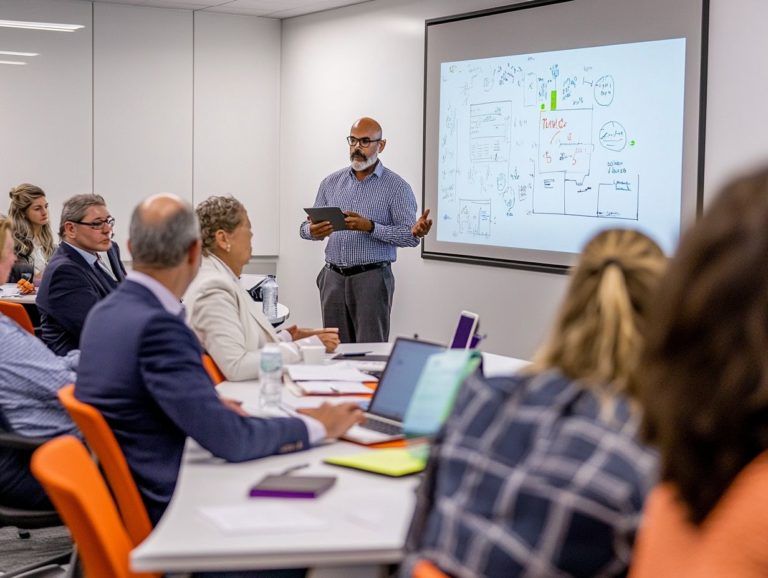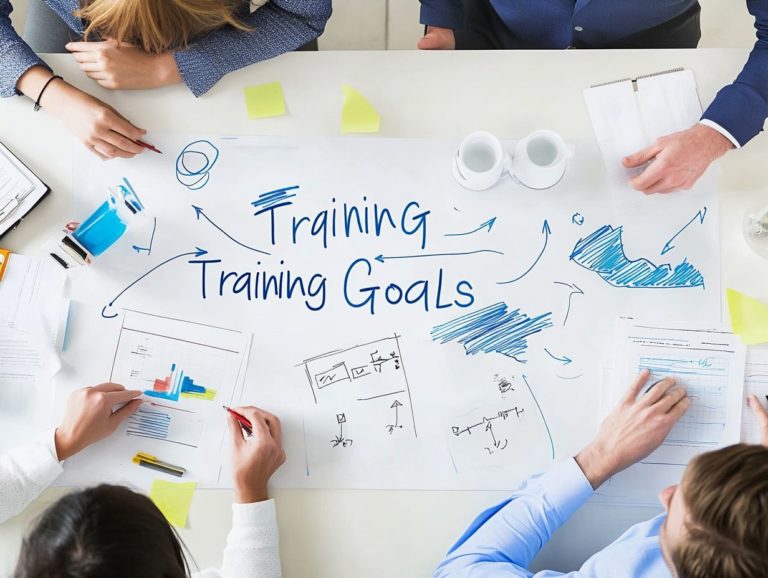How to Address Different Learning Paces in Training?
In today s diverse learning landscape, grasping the various paces at which individuals absorb information is essential for delivering effective training. This article delves into how different learning styles influence training and presents practical strategies for accommodating these variations.
You ll discover how to create an inclusive atmosphere that nurtures collaboration, employs varied teaching methods, and provides constructive feedback essential tactics that pave the way for success for all trainees.
The discussion will also address common challenges and methods for measuring progress, ensuring that everyone thrives in their learning journey.
Get ready to unlock the secrets to effective training for every learner!
Contents
- Key Takeaways:
- Understanding Learning Paces
- Addressing Different Learning Paces
- Creating an Inclusive Training Environment
- Maximizing Learning for All Trainees
- Effective Feedback Techniques
- Overcoming Challenges in Addressing Learning Paces
- Measuring Success in Training
- Frequently Asked Questions
- 1. How do I address different learning paces in training?
- 2. What are some strategies for accommodating different learning paces?
- 3. How can I ensure that everyone in the training session is learning at their own pace?
- 4. What should I do if I notice someone is struggling to keep up with the training?
- 5. How do I handle participants who are learning at a faster pace than others?
- 6. What can I do to create a positive learning environment for all participants, regardless of their learning pace?
Key Takeaways:

- Understand the impact of different learning paces on training to effectively cater to trainees’ individual needs.
- Encourage collaboration and adaptability in the training environment to create an inclusive learning space for all trainees.
- Utilize a variety of teaching methods and effective feedback techniques to maximize learning and measure progress.
Understanding Learning Paces
Understanding learning paces is essential in a kindergarten classroom. The diversity of learning styles greatly influences how students connect with the material.
Acknowledging that each child learns at their own pace allows you to tailor your instruction. This approach accommodates various learners, ultimately enhancing engagement and retention.
This strategy promotes the use of diverse content formats and a multisensory approach. This ensures that visual, auditory, kinesthetic, and reading/writing learners can flourish together in a nurturing setting.
Defining Learning Paces and Their Impact on Training
Defining learning paces means recognizing the unique rhythm at which you grasp and retain information. This factor significantly influences the effectiveness of your training.
Many factors shape this complexity, including how you think and learn, prior knowledge, and motivation levels. These elements can vary greatly among learners.
For example, you might find that fast-paced environments energize you, enabling quick digestion and application of new concepts. Conversely, a slower tempo may allow you to fully engage with the material.
To assess your personal learning pace, utilize self-assessment tools like learning preference questionnaires or feedback surveys. These tools help you identify your unique needs.
Immersive learning strategies such as interactive simulations and gamification cater to diverse learning speeds. They create an inclusive educational experience that aligns perfectly with your progress.
Addressing Different Learning Paces
Addressing the varying learning paces in a classroom requires a sophisticated, multi-faceted approach. This approach caters to the unique needs of each student.
Understand that learners interact with material in diverse ways. By incorporating strategies like peer-to-peer learning and role-playing scenarios, you can create an inclusive atmosphere where every student feels appreciated.
Implementing these techniques ensures that each child whether a visual, auditory, kinesthetic, or reading/writing learner remains engaged and advances at their own pace.
Strategies for Catering to Different Learning Styles
Catering to different learning styles is crucial for crafting a successful learning environment, especially in a kindergarten classroom where diverse needs come into play.
To effectively accommodate these varied preferences, employ a blend of strategies tailored to visual, auditory, kinesthetic, and reading/writing learners. For example, visual learners thrive with charts, diagrams, and vibrant flashcards that solidify their understanding of fundamental concepts like numbers and letters.
Auditory learners flourish with songs, storytelling, and engaging discussions that sharpen their listening skills. Incorporating hands-on activities such as building models or experimenting with art supplies can be particularly beneficial for kinesthetic learners, allowing them to explore through touch and movement.
A well-rounded approach might weave in reading/writing strategies, like encouraging interactive journals filled with drawings and words. This can enhance retention and support all types of learners in the classroom.
Creating an Inclusive Training Environment
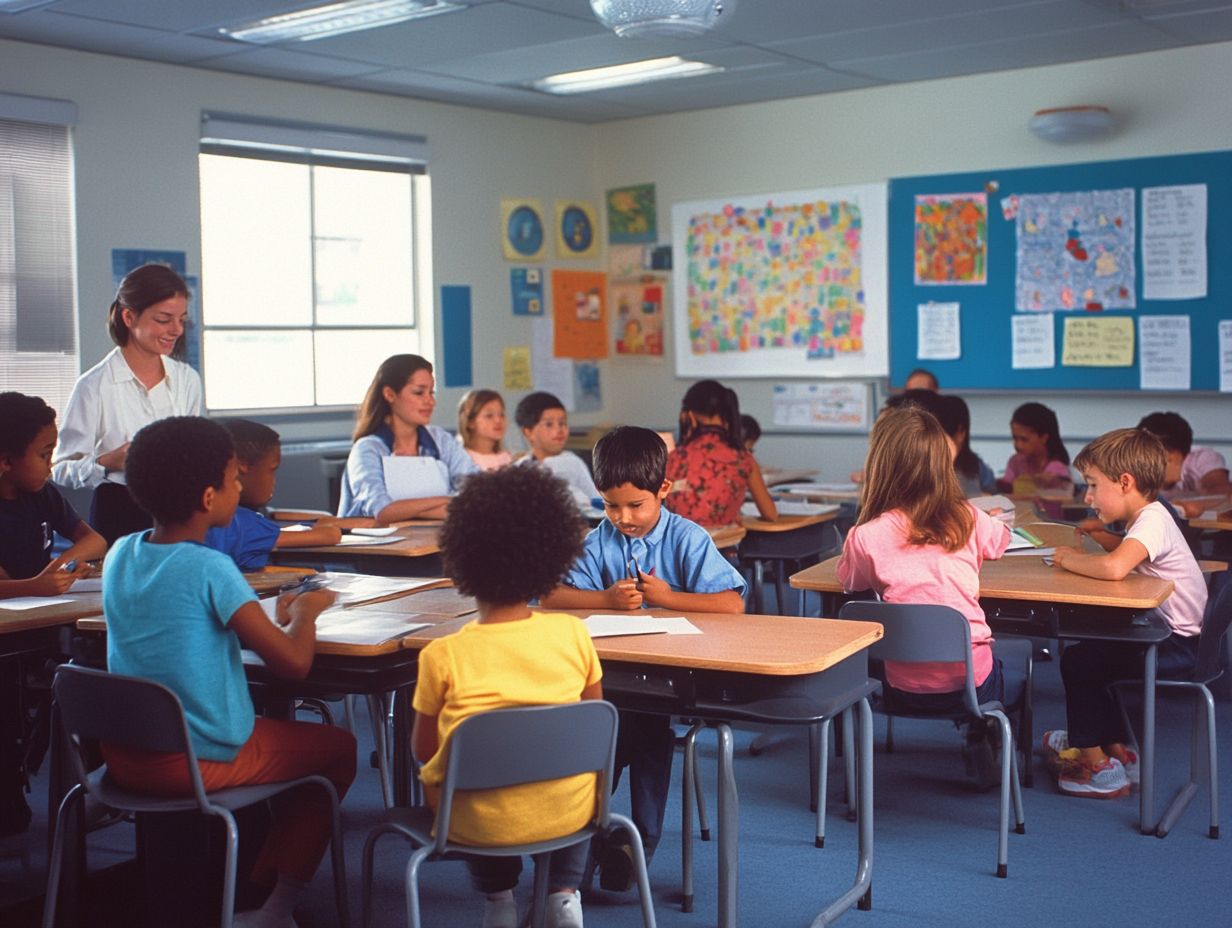
Creating an inclusive training environment is vital for your success! It ensures you feel supported and engaged, no matter your learning style or pace.
An effective training workshop fosters collaboration and encourages vibrant discussions among participants, facilitating a dynamic exchange of ideas that enhances both understanding and retention.
By incorporating diverse content formats and nurturing an atmosphere of respect and curiosity, you must ensure that every learner whether visual or auditory thrives now!
Encouraging Collaboration and Adaptability
Encouraging collaboration and adaptability among you and your peers is essential for addressing the diverse learning needs present in any educational environment.
Fostering a space for collaborative activities allows educators to tap into the power of peer-to-peer learning while accommodating different teaching styles. For instance, role-playing scenarios deepen your understanding by immersing you in real-world contexts, allowing you to embody various perspectives. This approach sharpens your problem-solving skills and enhances communication among participants.
Group projects that require pooling talents and knowledge enable you to adapt, problem-solve, and apply what you’ve learned in practical situations. These methods cater to various learning preferences while nurturing a strong sense of community within the classroom.
Maximizing Learning for All Trainees
Maximizing learning for all trainees requires employing a variety of teaching methods that cater to the diverse learning styles in your classroom. Integrating different instructional strategies and assessment techniques creates engaging lessons that capture students’ interest and ensures each learner effectively absorbs and applies the material.
Utilizing effective feedback techniques is essential, allowing you to fine-tune your approaches and address any gaps in understanding. This ultimately enhances the learning experience for everyone involved.
Utilizing Different Teaching Methods
Utilizing various teaching methods is crucial for reaching every type of learner in your kindergarten classroom, whether they are visual, auditory, or kinesthetic. By incorporating a blend of engaging strategies, you create a dynamic environment where each child can thrive.
Hands-on activities like building blocks or sand play allow kinesthetic learners to explore concepts through tactile experiences that captivate their curiosity. Visual aids, such as colorful charts or infographics, enhance understanding for those who absorb information best through imagery. Gamification, or using game-like elements in learning, adds another layer of engagement, transforming lessons into interactive experiences that boost motivation and participation.
By weaving together these diverse approaches, you not only cater to individual preferences but also foster a collaborative spirit, enabling children to learn from each other’s strengths. This leads to a richer educational journey for everyone involved.
Effective Feedback Techniques
Effective feedback techniques are essential for assessing your understanding and ensuring that your learning needs are fully met in the classroom.
These techniques also include a variety of approaches, such as formative assessments (methods that help you check your understanding) that offer ongoing insights into your progress and self-assessment tools that enable you to reflect on your performance.
By utilizing methods like peer reviews, quick quizzes, and interactive polls, you can create a dynamic feedback loop that fosters a deeper grasp of concepts.
Timely and constructive feedback is crucial for nurturing your engagement and encouraging continuous improvement. This leads to a more enriched learning experience overall.
Overcoming Challenges in Addressing Learning Paces
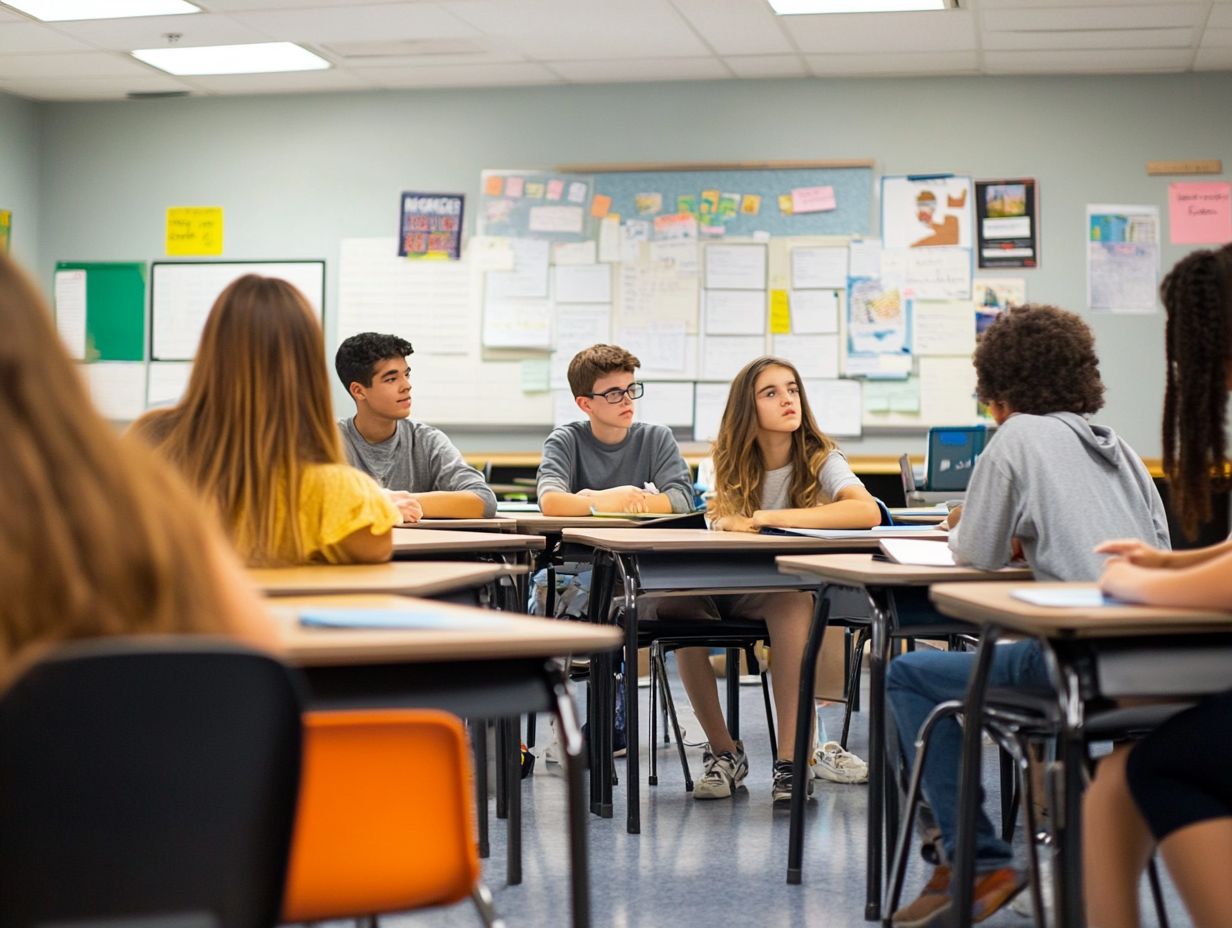
Overcoming the challenges of addressing varying learning paces is a crucial element of effective teaching. It requires a deep understanding of the factors that contribute to resistance and hinder progress among students.
By grasping these underlying issues, you can create a more supportive and conducive learning environment that fosters growth and engagement.
Dealing with Resistance and Lack of Progress
Dealing with resistance and a lack of progress among students necessitates a nuanced understanding of their unique learning styles and the factors that might stifle their engagement.
To effectively address these challenges, implement various strategies designed to cultivate a more inclusive and supportive learning environment.
One powerful approach is to create peer-to-peer learning opportunities, allowing students to collaborate and share insights, which enhances their grasp of the material.
By adapting your teaching methods to accommodate diverse learning preferences, you can significantly boost student motivation and participation.
Incorporating multimedia resources, hands-on activities, and discussions that resonate with different learning styles will help you connect more deeply with your learners.
Regularly seeking feedback from students enables you to identify specific roadblocks, facilitating targeted interventions that promote active engagement and foster a sense of ownership in their educational journey.
Measuring Success in Training
Measuring success in training is crucial for understanding how effective your teaching methods are and for assessing whether you’re truly meeting the needs of your learners.
Evaluating Individual and Overall Progress
Evaluating both your individual progress and the overall effectiveness of the training environment is essential for grasping how well different learning styles are being addressed.
By utilizing a mix of formative assessments, such as quizzes and reflective journals, instructors gain valuable insights into your unique learning journey.
These tools not only spotlight your strengths; they also help identify areas where you might need a bit more support.
Incorporating ongoing feedback sessions allows instructors to engage in meaningful conversations with you, fostering a culture of continuous improvement.
Analyzing overall trend data can reveal performance patterns, enabling educators to craft tailored instructional strategies that meet the diverse needs of the classroom.
Ultimately, these evaluations guide informed decisions that enrich the learning experience for you and all participants involved.
Frequently Asked Questions
1. How do I address different learning paces in training?
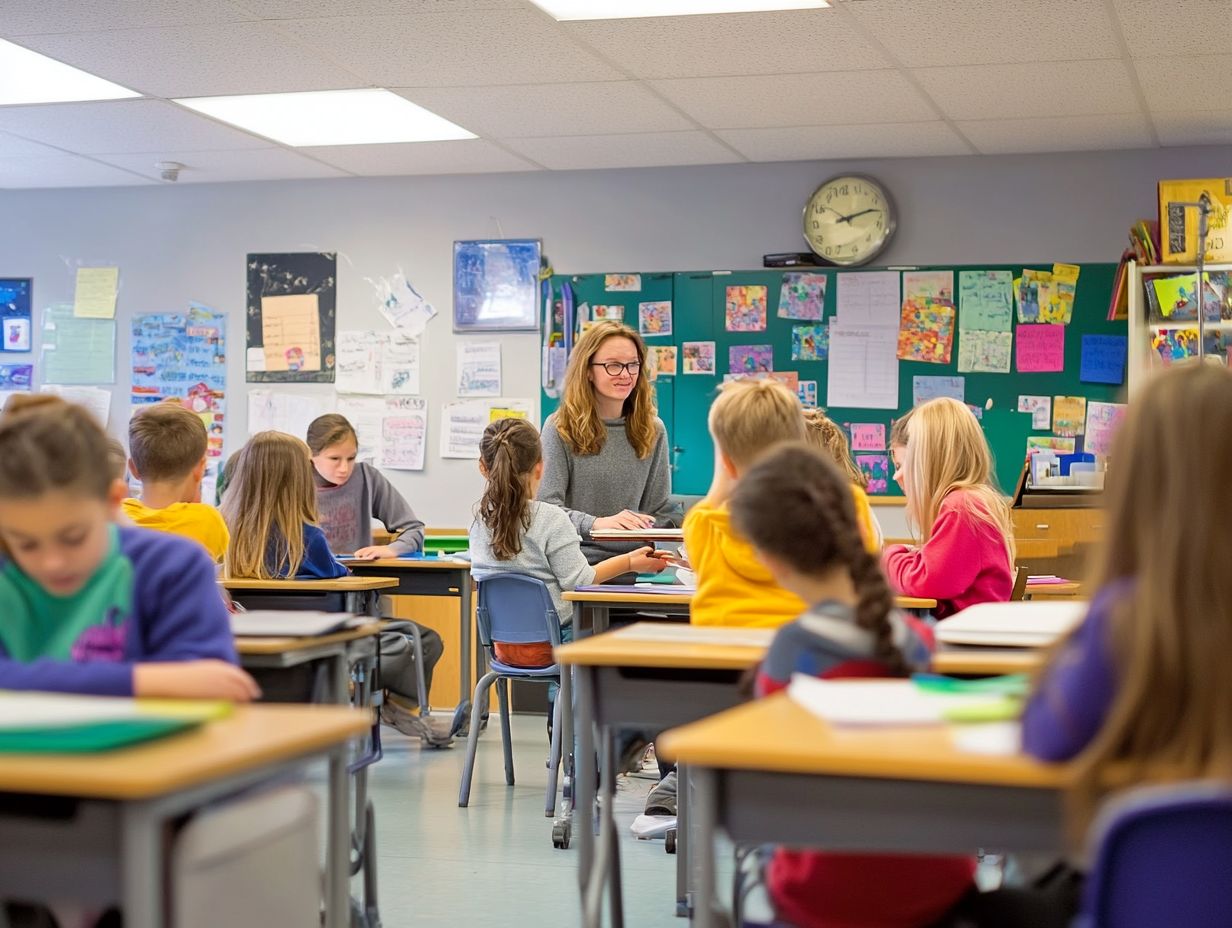
To address different learning paces in training, it is important to first assess the needs and abilities of each individual. This can be done through pre-training assessments or through observation during the training session.
2. What are some strategies for accommodating different learning paces?
Some strategies for accommodating different learning paces include offering individualized instruction, utilizing different teaching methods and materials, providing additional practice opportunities, and allowing for flexible pacing.
Discover how to tailor your learning experience!
3. How can I ensure that everyone in the training session is learning at their own pace?
Regularly check in with participants. Encourage them to ask questions.
Provide opportunities for self-paced learning. Offer one-on-one support to accommodate different learning speeds.
4. What should I do if I notice someone is struggling to keep up with the training?
Offer additional support and resources to those who are struggling. Provide extra practice materials or one-on-one tutoring.
Adjust the training pace to better suit their needs.
5. How do I handle participants who are learning at a faster pace than others?
Give faster learners additional challenges to keep them engaged. Assign more advanced tasks or offer them leadership roles in group activities.
6. What can I do to create a positive learning environment for all participants, regardless of their learning pace?
Foster a sense of inclusivity and support among participants. Promote teamwork and encourage open communication.
Celebrate individual achievements and be flexible with different learning paces to create a welcoming atmosphere.

